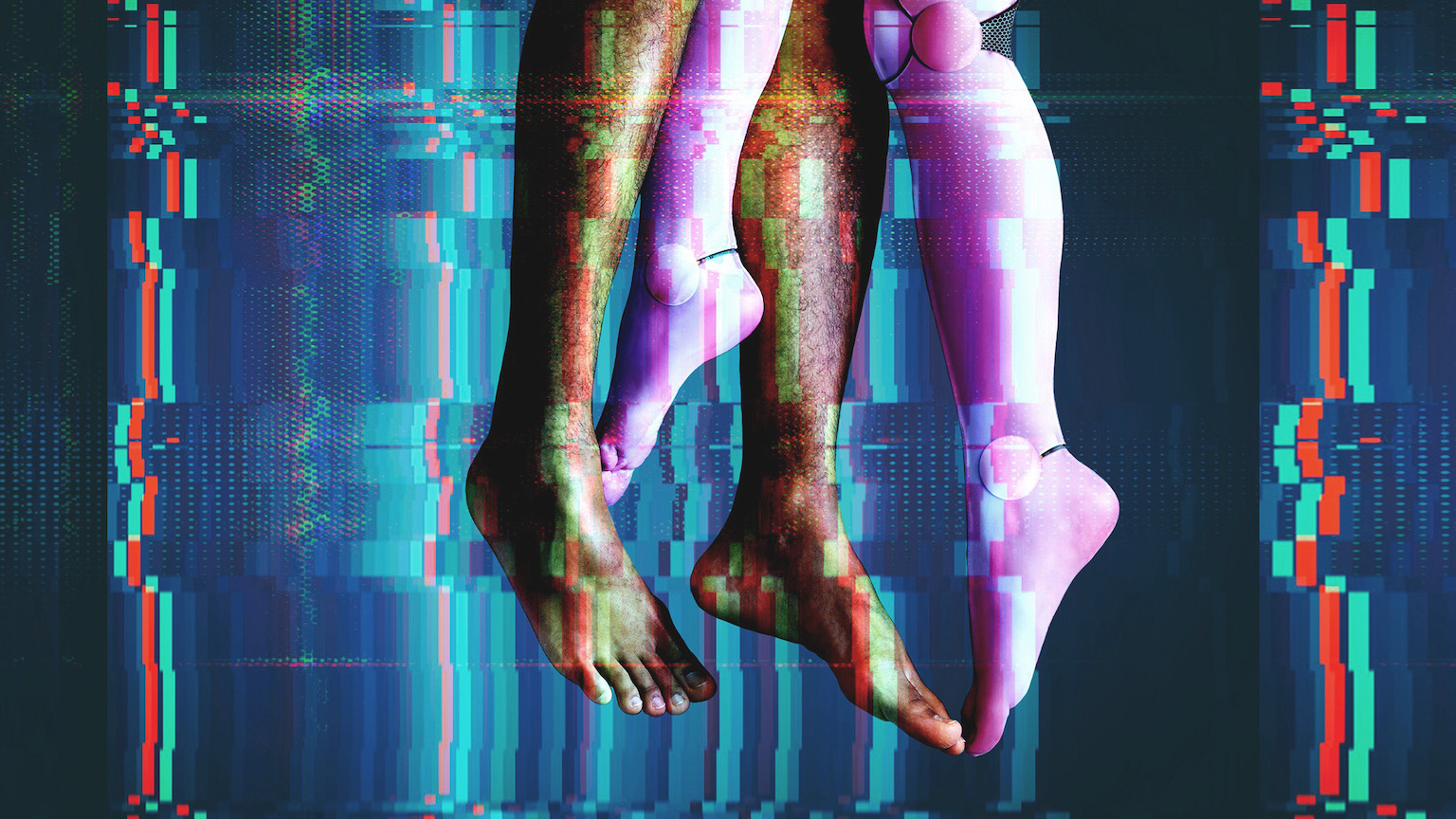How virtual reality will change how we see ourselves and therapy

- The philosopher Rene Descartes once argued that we are intimately attached to our body in a way that’s completely different to everything else — it’s ours and it’s personal.
- But he might have been surprised to see how quickly we can psychologically inhabit a virtual body.
- This kind of “virtual embodiment” has huge implications in reducing bias and increasing empathy, while also changing how we do therapy.
Your body is not a stranger and it is impossible to look at it objectively. Hold out your hands and look at them. Do you see them as you would a painting or a photo? Do you view them with the same detached reflection you would the world around you? If you can, look at someone else’s hands. Do you see them like yours? Probably not.
We are intimately bound to our bodies. You know when you got that scar on your knee and that you have those odd freckles that look like a star, and so on. Our body is familiar because we own it. Wherever our thoughts might live, or whatever the “mind” might be, they’re always couched within our unique, personal body.
This is one of the many things French philosopher Rene Descartes considers in his classic work Meditations. As we enter a new world with more sophisticated virtual reality, his work raises important questions about how we see ourselves. For example, what does it mean for a body to become a projected construction made of code, and how could these technologies change the ways we do therapy?
Salt and water
Early in Descartes’ work, he argues that what we call our mind is a “thinking thing” that’s not extended in any dimension. This is, in part, defined in contrast to our bodies, which are extended (i.e. they occupy space). This is enough for him to conclude that the “mind of man is entirely different from the body.”
The standard interpretation of Descartes’ position is as that of “substance dualism” — where we have a mental life and a physical life. We’re left scratching our heads as to how the two interact. But Descartes is not considered the father of modern philosophy for nothing, and he shows us how it’s a bit more complicated.
In one famous passage, Descartes challenges a simplistic body-versus-mind view. “I am not merely present in my body as a sailor is present in a ship,” he write. The mind does not just exist as some lofty monarch, commanding its lowly body. Rather, our minds are “intermingled” with our bodies and “form a unit.”
It’s not so much oil and water, as salt and water.
He argues, for instance, that if the mind and body were truly separate, then we’d look on any damage done to the body with the dispassionate eye of a sailor viewing their ship. If we were cut, we’d say, “oh, look at the torn flesh and pouring blood.” But this is ridiculous. When we’re cut, we feel pain, we scream, and we’re engaged with our body intensely. We mourn the body’s damage and work tirelessly to keep it fit and well.
Philosophers sometimes mistakenly refer to “the” body, when really you only have your body. In a point philosophers Jean-Paul Sartre and Maurice Merleau-Ponty later developed, we have a special relationship with our body that’s different to everything else. We can direct it, feel it, and use it. It’s the single and complete apparatus by which we can engage with the world.
Getting a new body
What happens, then, when more and more people start to abandon their “real-life” bodies and spend more time inhabiting a virtual one? What happens when we spend our life connected with a body which looks like ours, can be directed like ours, but is not actually ours? We are not talking, for the moment, about the type of virtual reality depicted in The Matrix — where the illusory technology is so sophisticated as to be indistinguishable from real life. Rather, we’re talking about virtual reality as it will emerge in the next decades: brilliant, but still not quite a perfect match for reality.
What’s interesting is that it takes surprisingly little — both in terms of time spent in virtual reality and the quality of the experience — for a subject to experience what’s known as “virtual embodiment.” This is where someone comes to accept their virtual body as real, going about their various actions without even a thought for the illusion of it all.
In 2004, Ehrson, Spence and Passingham gave us the “rubber hand illusion.” This illusion has a subject sit in a chair in front of a rubber hand while their real hand is behind a screen, out of sight. When the experimenters tickled or stroked the rubber hand, the brain quickly integrated the multisensory information to create a sensation of what “should” be happening. In this instance, the brain integrates the sight of seeing someone stroking the plastic hand with a correlate feeling that ought to accompany it. The brain invents and gives us the feeling of being stroked, even without the requisite nerve endings.
Lenggenhager et.al (2007) went even further than this. They gave subjects an entirely new body with a virtual-reality headset. It became clear that people can quite easily associate with this new virtual reality, and the brain corrects multisensory information just as in the rubber hand illusion: Sensations felt by the virtual body are felt by the “real” body, or rather the mind. These are, in effect, out-of-body experiences. Bear in mind, also, that this took place in 2007, and that technology has improved significantly since then. But subjects still identified with and acted with these bodies.
The use of virtual reality
There are huge implications for cheap, commonplace, and high-functioning virtual reality, things that Descartes could only dream of. In a fascinating piece, Joakim Vindenes from the University of Bergen writes that this “Virtual Embodiment” in a simulated body has many practical applications:
“It can be exploited to reduce implicit racial bias, make offenders of domestic violence get better in noticing the fear in victims, improve cognitive task performance and decrease age bias (to mention just a few),” he wrote.
In short, if we can identity with someone of a different race, gender, age, or stage, then we are much more likely to empathize with and understand these groups. It’s actually possible to walk a mile in someone else’s shoes.
There are also some intriguing possibilities for the use of virtual reality in therapy. There’s an exercise used by certain therapists that has you face an empty chair and open a conversation with an imagined person, or an aspect of yourself. What would you say to your younger self? What older version of yourself do you want to see? What advice can you give yourself as you navigate this situation? The act of externalizing can be hugely curative. It allows us to be more rational, and to evaluate our own reactions to things.
With virtual reality, this need not require such a great feat of imagination. In 2011, Hershfield et al. (2011) showed they could encourage subjects to save more in pensions for their “future selves” that they saw in virtual-reality applications. Bourdin et al. (2017) even showed it could reduce the fear of death.
The benefits of detachment
Sometimes it’s hugely beneficial to detach from yourself. For most people, interacting with a virtual world is less threatening than real-life equivalents. In 2022, Rogers et al. showed that “30 per cent of people preferred disclosing negative experiences via VR. This means that therapy might be opened up to new people who don’t feel comfortable with traditional face-to-face interactions.” Whether this will change as virtual reality becomes more mainstream is for the researchers of tomorrow to conclude.
Science continutes to prove what philosophers and academics have argued from milllenia. Stepping back to view yourself as if from a distance is a common trick of Stoics. Marcus Aurelius (yes, the emperor from Gladiator) argued that taking a gods-eye view of our struggles puts them into perspective. Epictetus encourages his followers to examine events as valueless and objective events, and we can choose our reaction to those.
Virtual reality is going to be much more than computer games and video calling. It will provide new opportunities to heal and grow.
Jonny Thomson teaches philosophy in Oxford. He runs a popular Instagram account called Mini Philosophy (@philosophyminis). His first book is Mini Philosophy: A Small Book of Big Ideas.





